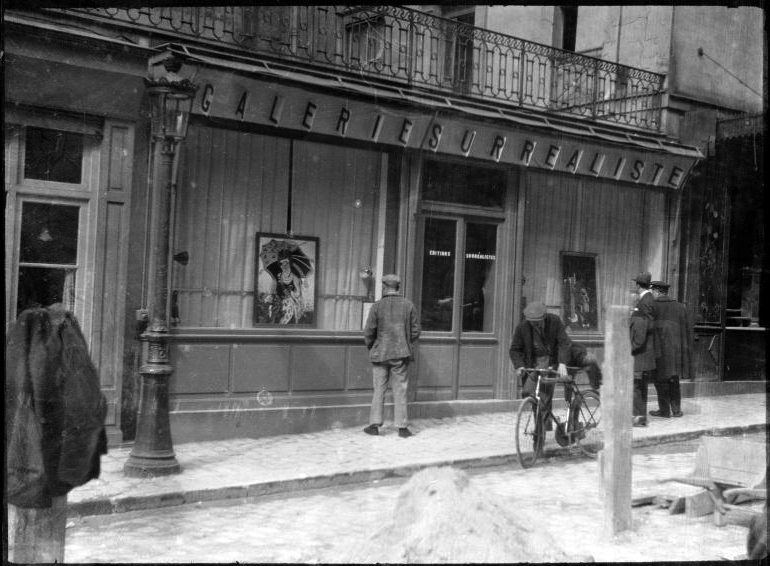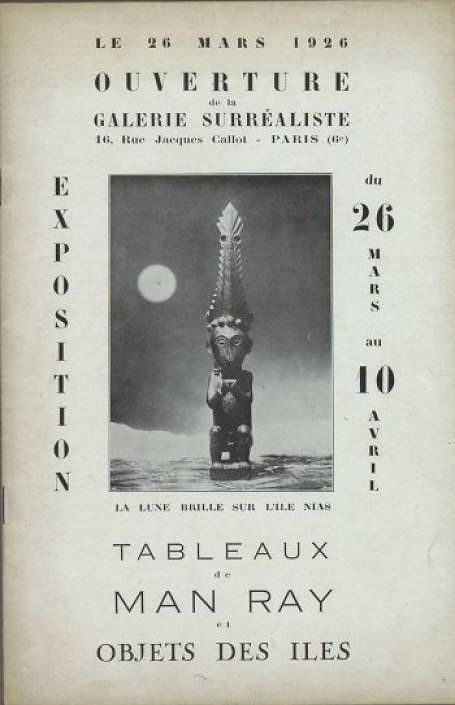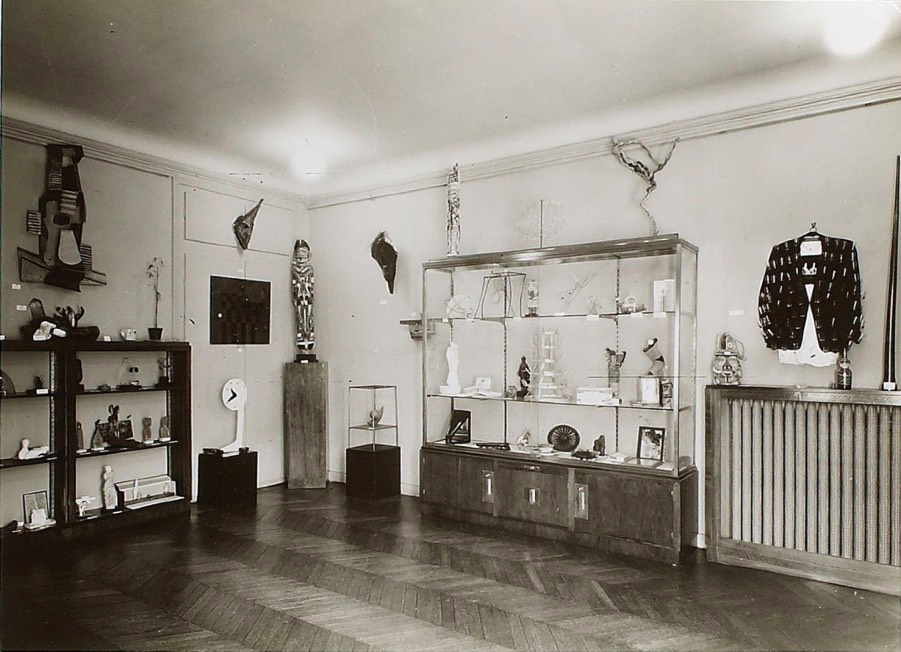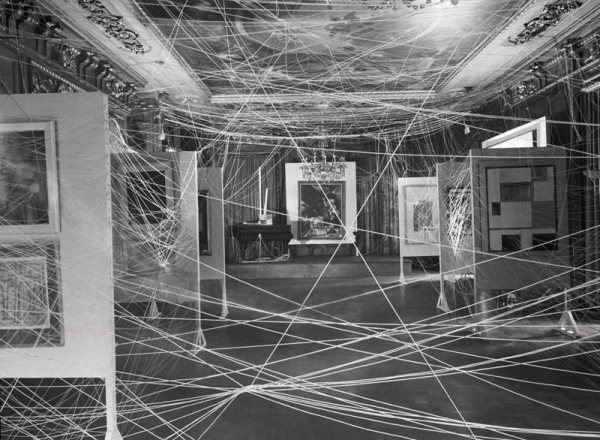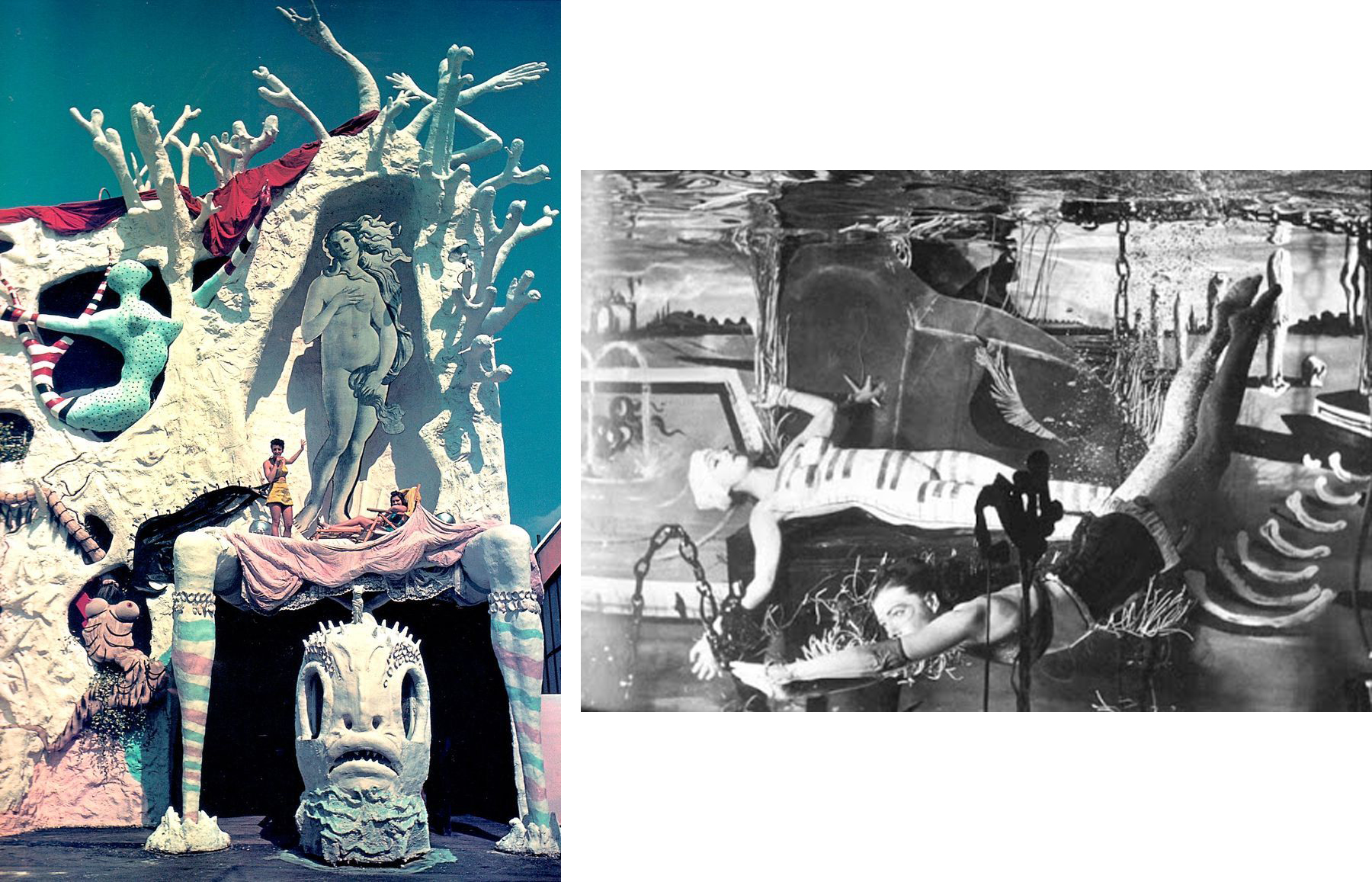Surrealism was the first modern art movement to make the creation and design of exhibitions a major focus of its activity. The group transformed the art exhibition from a traditional display of artworks into a staged venue intended to provoke new ideas and experiences. The contents of Surrealist exhibitions were typically eclectic and included works by Surrealist artists, other artists and non-artists admired by the Surrealists, as well as objects of various sorts and artifacts from cultures perceived as “primitive.”
Exhibitions as Surrealist experiences
From the beginning, Surrealist exhibitions were intended to provide a Surrealist experience for viewers and lead them to perform their own acts of Surrealist imagination. The juxtaposition of disparate works and objects in the extended space of an exhibition would, it was hoped, provoke the creation of a new world, using the same mechanism as that employed in a Surrealist collage.
During the 1920s the Surrealists ran their own art gallery, which staged several unconventional exhibitions. Man Ray’s work was exhibited with art from Oceanic cultures, while Tanguy’s paintings were paired with Native American works. These non-European works were also seen as products of unconscious thinking, and as such fully equal to the works of Surrealist artists in providing insight into the immense creative resources of the arational mind.
Contempt for art market values
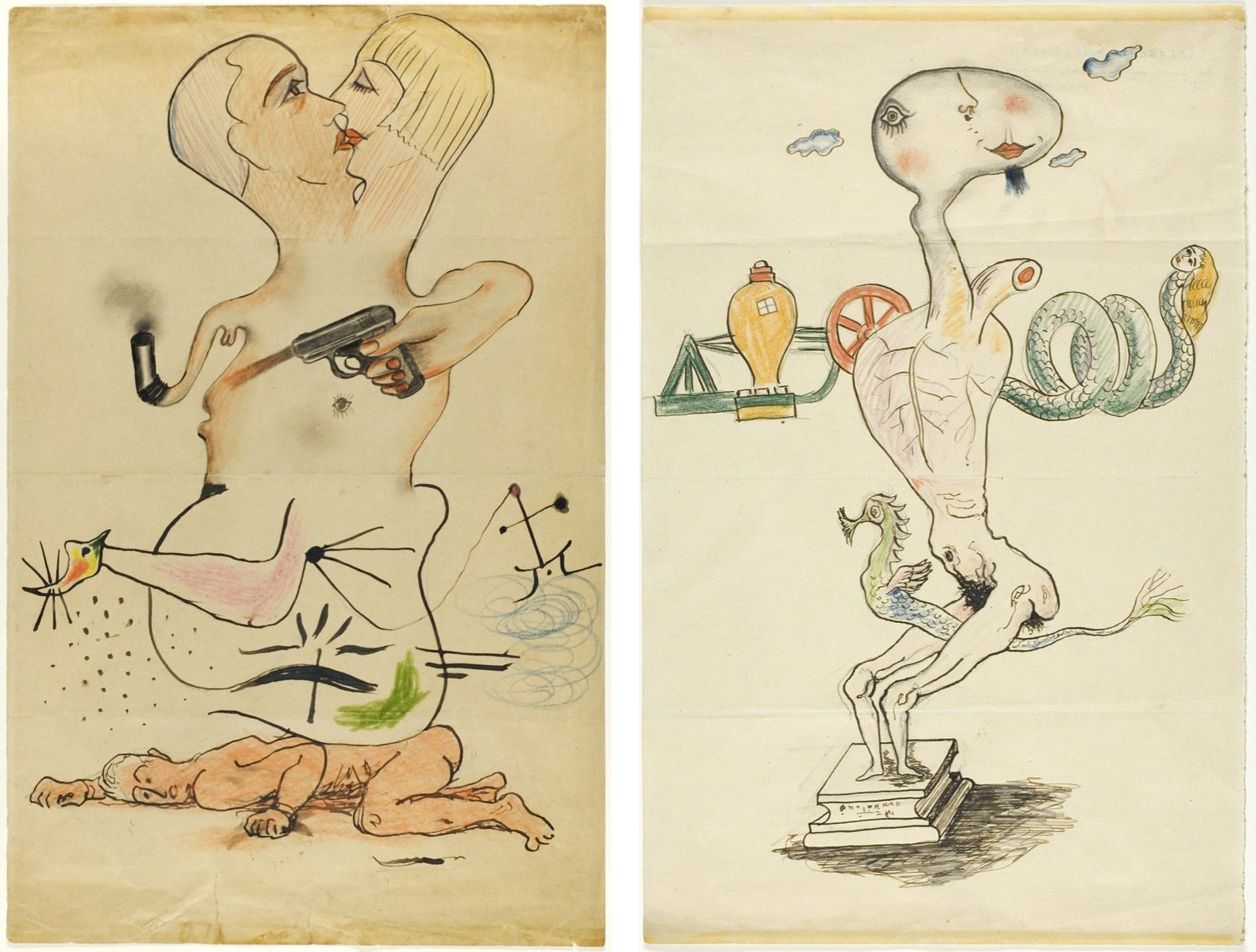
Left: Exquisite Corpse drawing by Yves Tanguy, Joan Miró, Max Morise, and Man Ray, 1927, ink and pencil on paper, 14 1/8 x 9 inches (MoMA); Right: Exquisite Corpse drawing by Yves Tanguy, André Breton, Max Morise, and Man Ray, c. 1927
The Surrealist Gallery also presented an exhibition of “exquisite corpse” drawings. These are drawings of figures made by a collaboration of three to five people using a method derived from parlor games. Each person draws part of the body and then folds the paper over so the person drawing the next section cannot see the previous drawing. Once the figure is completed the paper is unfolded and the strange juxtapositions of the various parts become a new Surrealist entity.
The “exquisite corpse” method demonstrated many basic Surrealist principles. Both artists and non-artists participated in the making of exquisite corpses, which, like all Surrealist works, were not intended to be the result of artistic skill. The group nature of the drawings as well as their arbitrary automatic creation were intended to subvert any attempt to exalt the individual artist and his or her talent. These are drawings anyone can do. The exhibition of exquisite corpse drawings in the Surrealist Gallery demonstrated the group’s contempt for conventional assumptions about the value of art and the skills of artists that underpin the art market.
Irrational categories of display
The Surrealist Gallery did not survive very long, but the Surrealists continued to stage exhibitions, which grew in scope and ambition during the 1930s. The Surrealist Exhibition of Objects was held in the gallery of Charles Ratton, a dealer in African, Oceanic, and Native American arts. This 1936 exhibition brought together over two hundred objects divided into categories, including Surrealist objects as well as natural objects, interpreted objects, mathematical objects, found objects, readymade objects, and so-called “savage” objects (the art of Oceania and Native Americans).
The eclectic presentation brought together objects typically exhibited in very different contexts: art galleries, natural history museums, anthropological museums, science museums, and flea markets. By upsetting the conventional categories of knowledge and presenting an alternative, illogical system, the Surrealists demonstrated how context creates meaning. The exhibition undermined the supposedly rational divisions of human knowledge using irrational strategies of display.
Surrealist environments
The most famous Surrealist exhibition was the 1938 International Exhibition of Surrealism at the Beaux Arts Gallery in Paris. It displayed 300 works and objects by over sixty artists from fifteen different countries. The scale of the exhibition was impressive, and its installation design made it truly remarkable. Visitors were enfolded in an entire Surrealist environment.
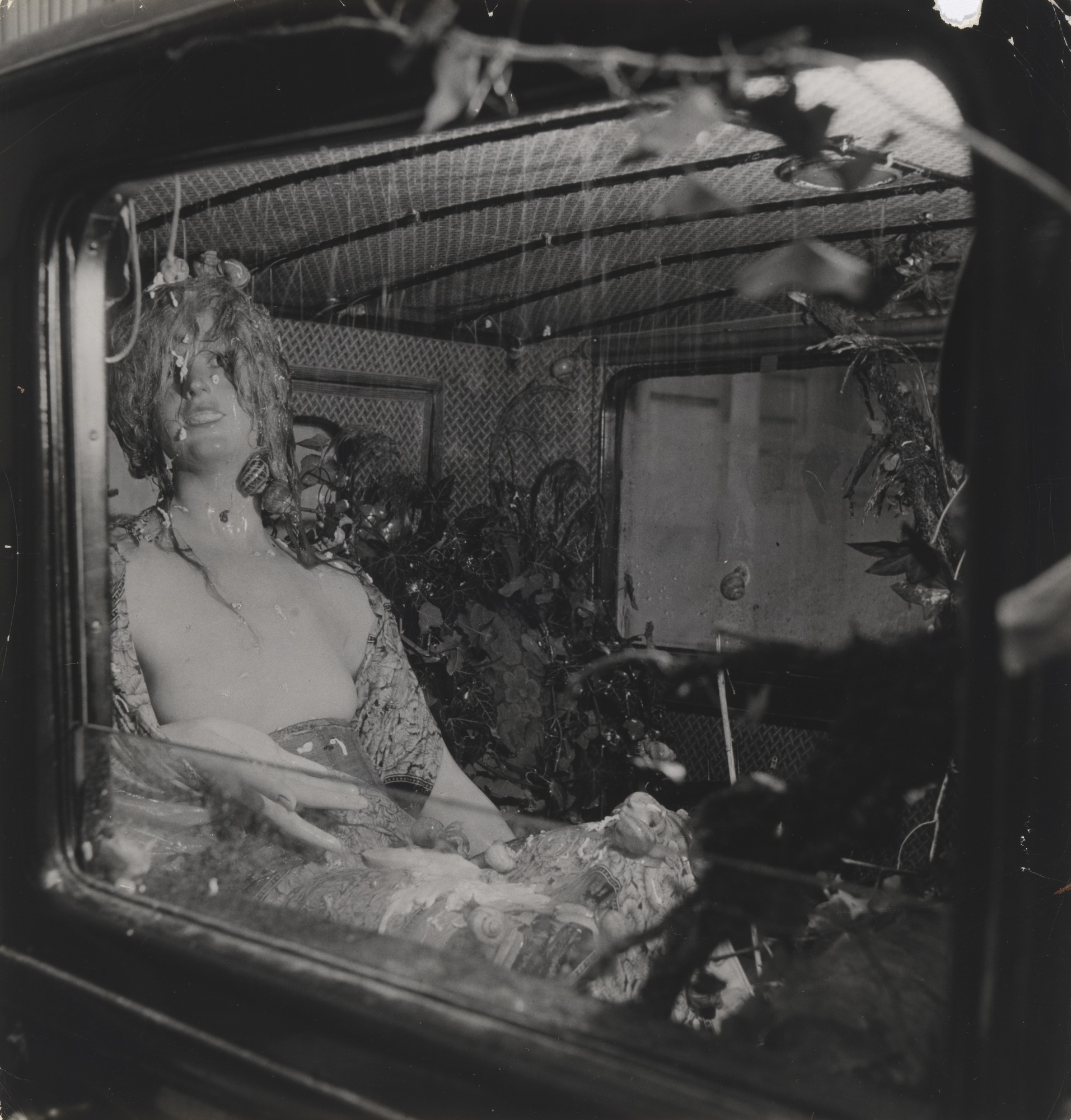
Roger Schall, Untitled (International Surrealist Exhibition, Paris), 1938, gelatin silver print, 22.1 x 21.1 cm (MoMA)
In the lobby was Dalí’s Rainy Taxi, an old car surrounded by vines and installed with a system of tubing that created a downpour in the interior. Two mannequins, one with a shark’s head and one with a woman’s, sat inside surrounded by lettuce and covered in live snails.
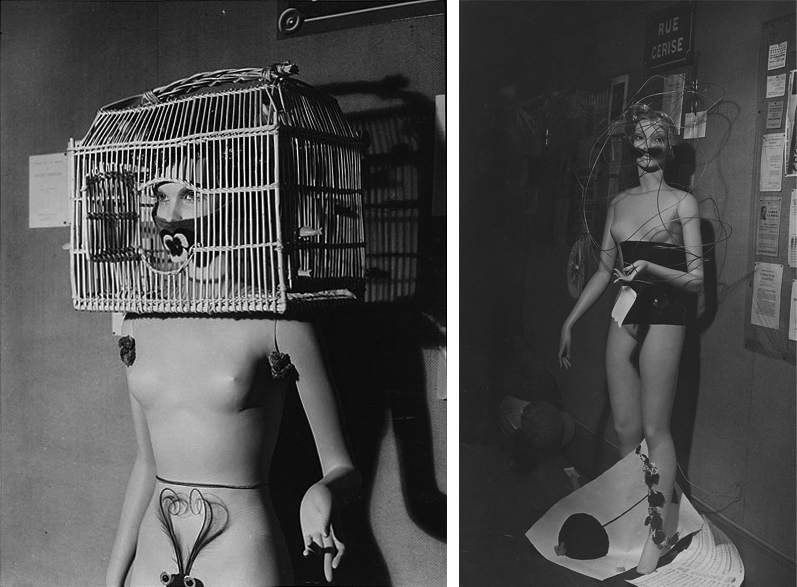
Left: Man Ray, André Masson’s mannequin at the International Surrealist Exhibition, 1938; Right: Man Ray, Joan Miró’s mannequin at the International Surrealist Exhibition, 1938
Leading from the lobby was a long hallway lined by twenty mannequins, each costumed by a Surrealist artist. At the end of the passageway was the main hall of the exhibition, designed by Marcel Duchamp. The ceiling was hung with hundreds of sacks of coal, while the floor was covered with dead leaves and had a pool with water lilies and reeds. In the center of the room was an old iron heater, and in each corner were large beds covered in satin quilts.
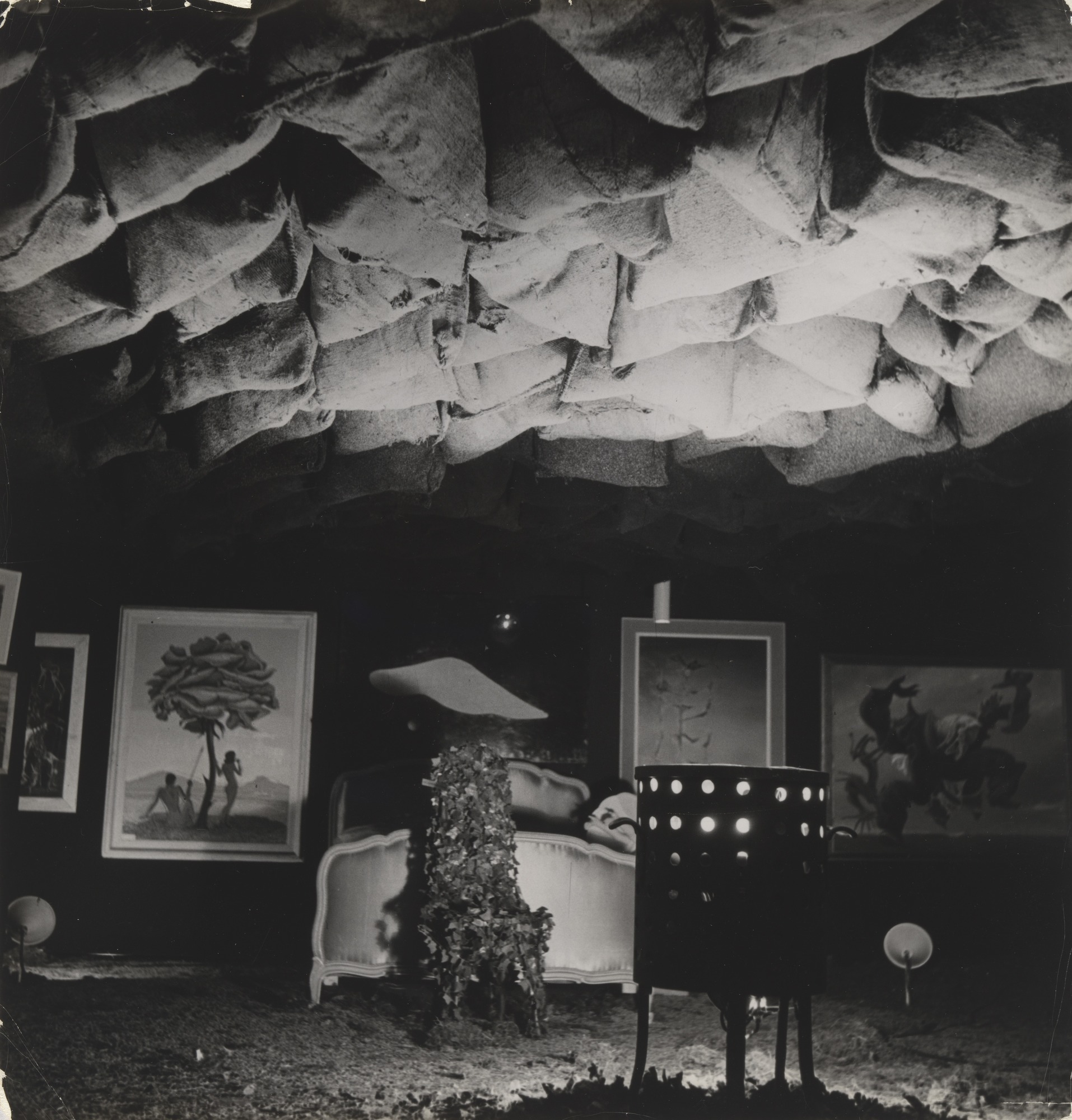
Roger Schall, Untitled (International Surrealist Exhibition, Paris), 1938, gelatin silver print, 22.1 x 21.1 cm (MoMA)
Paintings were hung on the walls as well as on two revolving doors next to the heater. Surrealist furniture and objects were displayed throughout. The room was unlit, and visitors were given flashlights to use during their journey through the exhibition. During opening night a German military march was played through a loudspeaker, coffee was roasted to emanate the “perfumes of Brazil,” and a dancer performed a dance titled “The Unconsummated Act” in and around the pool. For the most part art critics mocked the exhibition, but it was an enormous popular success.
The elaborate installation of the 1938 exhibition was not repeated, but in 1942 Duchamp designed another installation for the First Papers of Surrealism Exhibition in New York City. He wound a mile of string into a labyrinth that covered the walls and art works like an enormous spider web. Visitors were literally enmeshed with the Surrealist works in the environment. The illogical space he created seemed to be more a physical manifestation of mental space than an environment to be explored by a human body.
Salvador Dalí took the concept of Surrealist installation into the realm of advertising, fashion, and popular entertainment. In addition to designing windows for department stores in the 1930s, he erected the Dream of Venus pavilion at the 1939 New York World’s Fair. This full-scale fantasy environment turned Surrealist eroticism into a kind of popular burlesque. Visitors entered between two huge legs, and the interior included a grotto with a ceiling covered in inverted open umbrellas, a new version of Rainy Taxi, a 36-foot long sofa with a reclining nude, and seventeen women costumed as mermaids cavorting for viewers in a furnished aquarium.
Surrealist exhibitions broke down conventional distinctions between art and non-art, and thwarted the consumption of creative works as commodities. In addition, the Surrealists transformed the conception of the exhibition from a neutral site for the display of objects into a creative production in its own right. The later developments of environments, happenings, and installation art are all indebted to the Surrealists’ conception of the art exhibition as an experience rather than simply a showcase for artworks.
Additional resources:
Read more about the First Papers of Surrealism exhibition at the Tate Papers
Roger Schall’s photos of the 1938 Surrealist exhibition at MoMA

